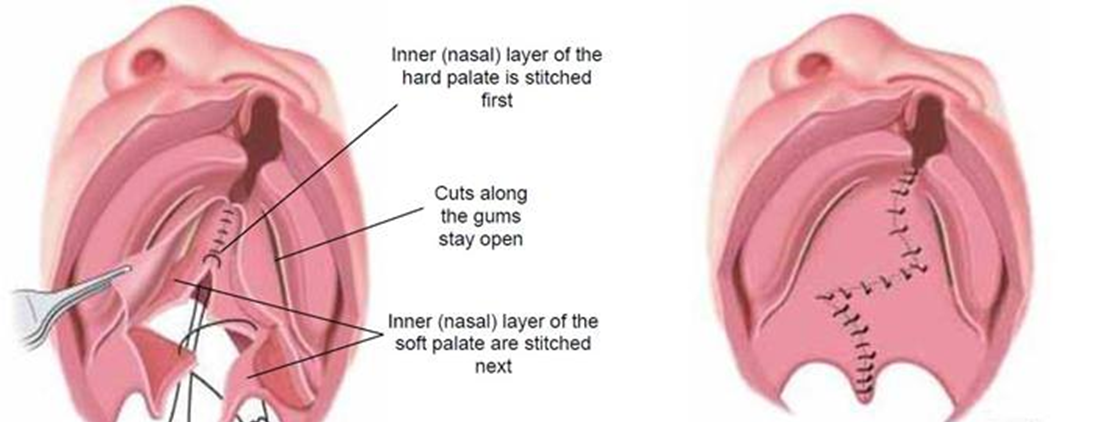A nurse is caring for a toddler who is 24 hours postoperative following a cleft palate repair. Which of the following actions should the nurse take?
Apply bilateral wrist restraints.
Administer opioids for pain.
Implement a soft diet.
Offer fluids through a straw.
The Correct Answer is C
Choice A reason: Apply Bilateral Wrist Restraints
Applying bilateral wrist restraints can be necessary in some cases to prevent the child from touching or interfering with the surgical site. However, restraints should be used as a last resort and only when absolutely necessary. They can cause distress and discomfort to the child and should be monitored closely to prevent any complications.
Choice B reason: Administer Opioids for Pain
Administering opioids for pain management is a common practice post-surgery to ensure the child is comfortable. However, opioids should be used cautiously due to the risk of side effects and potential for dependency. Non-opioid pain management strategies, such as acetaminophen or ibuprofen, are often preferred unless the pain is severe.
Choice C reason: Implement a Soft Diet
Implementing a soft diet is crucial for a child who is 24 hours postoperative following a cleft palate repair. The surgical site in the mouth is still healing, and a soft diet helps prevent any damage or irritation to the area. Soft foods are easier to swallow and less likely to cause pain or disrupt the healing process. Examples of soft foods include mashed potatoes, yogurt, and pureed fruits.

Choice D reason: Offer Fluids Through a Straw
Offering fluids through a straw is not recommended for a child who has undergone cleft palate repair. The suction created by using a straw can put pressure on the surgical site and potentially cause complications. Instead, fluids should be offered using a cup or a spoon to minimize any risk to the healing palate.
Nursing Test Bank
Naxlex Comprehensive Predictor Exams
Related Questions
Correct Answer is ["0.2"]
Explanation
Step 1: Determine the concentration of morphine sulfate available. = 10 mg/mL
Step 2: Determine the dose of morphine sulfate to be administered. = 2 mg
Step 3: Calculate the volume to be administered using the formula: Volume to be administered = Dose ÷ Concentration
Step 4: Perform the division. Calculation: 2 mg ÷ 10 mg/mL = 0.2 mL
Step 5: Round the answer to the nearest tenth if necessary. = 0.2 mL (no rounding needed)
The nurse should administer 0.2 mL per dose.
Correct Answer is D
Explanation
Choice A reason: You Can Expect Swelling of the Ankles While Taking This Medication
Swelling of the ankles, or peripheral edema, is a known side effect of verapamil. This calcium channel blocker can cause fluid retention, leading to swelling in the lower extremities. While this is a common side effect, it is not an instruction that the nurse should include in discharge teaching. Instead, the nurse should inform the client to report any significant swelling to their healthcare provider.
Choice B reason: Do Not Take This Medication on an Empty Stomach
Verapamil can be taken with or without food, but taking it with food may help reduce stomach upset. Therefore, the instruction to avoid taking it on an empty stomach is not strictly necessary. The nurse should advise the client to follow their healthcare provider’s specific instructions regarding medication administration.
Choice C reason: Limit Your Fluid Intake to Meal Times
Limiting fluid intake to meal times is not a standard recommendation for clients taking verapamil. Adequate hydration is important for overall health, and there is no specific reason to restrict fluid intake while on this medication. The nurse should encourage the client to maintain a balanced fluid intake throughout the day.
Choice D reason: Increase Your Daily Intake of Dietary Fiber
Increasing daily intake of dietary fiber is a beneficial instruction for clients taking verapamil. Verapamil can cause constipation as a side effect, and a high-fiber diet can help mitigate this issue. Foods rich in fiber, such as fruits, vegetables, and whole grains, can promote regular bowel movements and improve digestive health.

Whether you are a student looking to ace your exams or a practicing nurse seeking to enhance your expertise , our nursing education contents will empower you with the confidence and competence to make a difference in the lives of patients and become a respected leader in the healthcare field.
Visit Naxlex, invest in your future and unlock endless possibilities with our unparalleled nursing education contents today
Report Wrong Answer on the Current Question
Do you disagree with the answer? If yes, what is your expected answer? Explain.
Kindly be descriptive with the issue you are facing.
